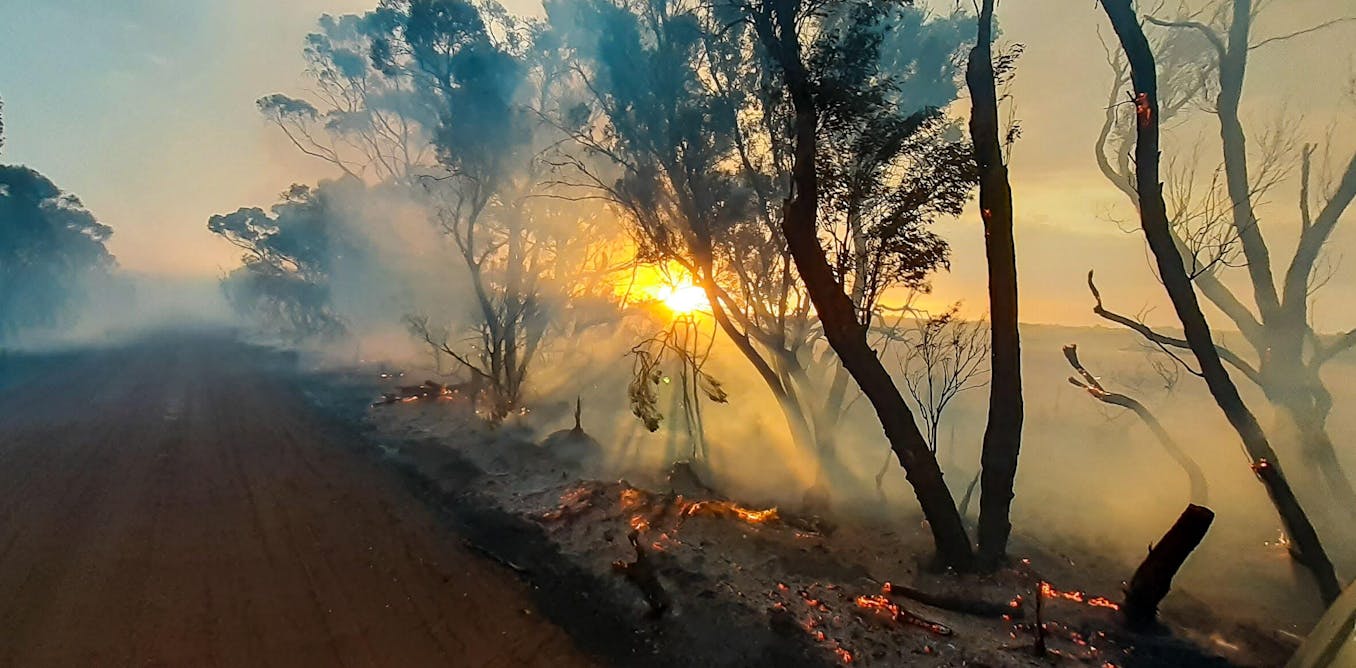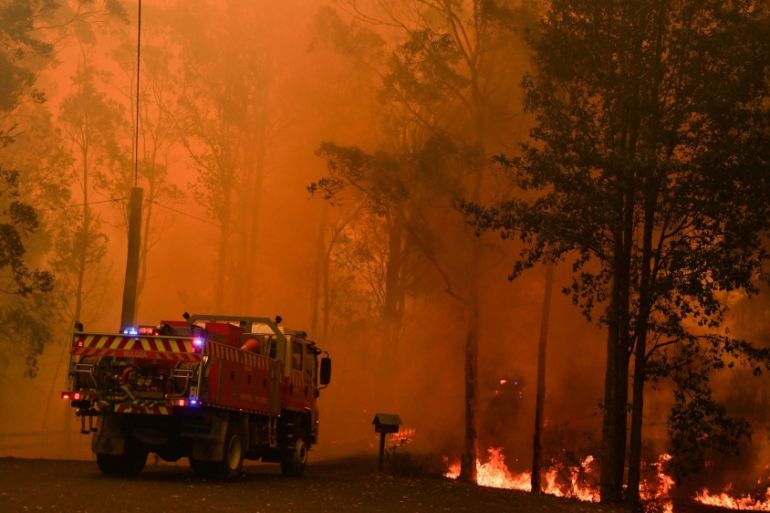BMP Insights: Secret Parts and Perks of a Bushfire Management Plan
BMP Insights: Secret Parts and Perks of a Bushfire Management Plan
Blog Article
The Importance of Bushfire Management in Fire Security
In the world of fire security, the relevance of reliable bushfire management can not be downplayed. As areas globally face boosting instances of wildfires, the positive strategy to preventing and reducing these natural calamities with strategic bushfire management approaches has actually emerged as a vital aspect. Beyond the instant danger to human life and residential property, the interplay in between bushfire monitoring and environmental preservation, area participation, and climate change postures complicated challenges that demand comprehensive options.
Significance of Proactive Bushfire Avoidance
Positive bushfire prevention approaches are essential in mitigating the ravaging influences of wildfires on ecological communities and neighborhoods. By taking preventative measures before a bushfire takes place, the dangers linked with these natural calamities can be significantly lowered. One essential facet of proactive bushfire avoidance is fuel monitoring. This involves minimizing the quantity of flammable material, such as dead greenery and completely dry fallen leaves, that can serve as gas for fires. Fuel monitoring strategies include suggested burns, where controlled fires are deliberately lit to reduce the accumulation of flammable material.
Additionally, creating firebreaks - cleared areas where greenery is purposefully eliminated to produce an obstacle to stop the progress or slow of a bushfire - is another vital proactive procedure. By applying these strategies, the spread of wildfires can be restricted, shielding both human lives and the setting. Educating the public on fire safety and security practices and promoting community recognition concerning the value of bushfire avoidance are essential parts of positive strategies. Inevitably, aggressive bushfire prevention plays a significant duty in safeguarding areas and communities from the damaging impacts of wildfires.
Function of Neighborhood Engagement in Fire Protection
Involving the area in fire defense efforts is indispensable to improving the performance of positive bushfire prevention approaches. Neighborhood involvement plays a vital role in cultivating a collective understanding of the threats presented by bushfires and the value of preparedness steps. By entailing local citizens, authorities can share vital info on fire safety methods, emptying treatments, and very early warning systems, equipping people to take aggressive actions to secure their buildings and lives.
In addition, area engagement initiatives aid build resilience within communities, promoting a feeling of unity and shared responsibility in mitigating fire dangers. With workshops, training sessions, and neighborhood occasions, citizens can learn just how to produce defensible areas around their homes, minimize fire gas tons, and recognize possible threats. By cultivating a society of readiness and partnership, neighborhoods can enhance their capability to respond successfully to bushfire emergency situations, minimizing the effect on residential or commercial properties and lives. Ultimately, community interaction is a foundation of detailed fire security techniques, emphasizing the significance of collective action in safeguarding susceptible areas from the threat of bushfires.
Value of Wild Animals Preservation in Bushfire Monitoring
Preservation of wildlife plays an important role in efficient bushfire management methods, making sure the protection of diverse ecosystems and biodiversity in fire-prone areas. Wildlife conservation is vital as it adds to the overall durability of ecosystems, assisting in their capability to recoup and endure from the effect of bushfires. By conserving habitats and shielding various types, the all-natural balance within these environments is maintained, which is crucial for their long-term health and wellness and sustainability.
In addition, wildlife conservation additionally helps in decreasing the danger and strength of bushfires. Healthy and balanced environments with view it unspoiled wild animals populaces can serve as all-natural firebreaks, decreasing the spread of fires and restricting their destructive potential (Bushfire Management Plan). Particular pet species, like burrowing animals or birds that spread out seeds, play one-of-a-kind duties in preventing fires or aiding in the post-fire regeneration of habitats
Incorporating wildlife preservation into bushfire monitoring techniques is not only vital for securing biodiversity however likewise for advertising the general health and wellness and durability of environments when faced with increasing fire risks.
Benefits of Strategic Gas Decrease Programs
Tactically executing fuel decrease programs is vital in reducing the danger and impact of bushfires in fire-prone areas. These programs include controlled burning, mechanical clearing up, and other approaches to minimize the amount of combustible plants readily available to sustain wildfires. By tactically decreasing fuel tons in key locations, such as near residential areas or vital infrastructure, the intensity and spread of bushfires can be considerably decreased.
One of the primary benefits of gas reduction programs is the improvement of general fire strength in an ecological community. By producing tactical fuel breaks and minimizing the continuity of plants, these programs help to disrupt the path of a bushfire, making it easier for firemans to include and snuff out the blaze. Additionally, fuel decrease programs can shield biodiversity by avoiding exceedingly extreme fires that can ruin habitats and intimidate wild animals populations.
Additionally, these programs can also secure human lives and residential property by lowering the risk of disastrous fires that pose a substantial danger to neighborhoods. Inevitably, strategic fuel decrease programs play a critical role in proactive bushfire administration and cultivating a safer setting for both individuals and basics nature.
Influence of Climate Change on Bushfire Risk

Higher temperatures cause drier plant life, making it a lot more susceptible to ignition. Decreased rains in certain areas extends dry spell conditions, additionally increasing the flammability of the landscape. Furthermore, the transforming environment has actually altered wind patterns and weather, resulting in even more irregular fire actions and rapid fire spread.
As the environment proceeds to transform, the frequency and intensity of bushfires are expected to increase, demanding a proactive and adaptive strategy to bushfire administration. Methods must develop to represent the altering danger landscape, including environment projections and thinking about lasting strength in fire administration planning. Dealing with the effect of climate adjustment on bushfire danger is crucial in developing efficient methods to secure lives, residential or commercial property, and the setting.
Conclusion
To conclude, positive bushfire prevention, community engagement, wild animals conservation, strategic gas reduction programs, and consideration of climate change are essential components in reliable fire security. By executing these methods, we can better manage bushfire threats and shield both human lives and the environment. Bushfire Risk. It is vital that stakeholders collaborate to prioritize these actions to lessen the devastating impact of bushfires on areas and ecological communities

As the environment continues to change, the frequency and intensity of bushfires are anticipated to rise, requiring a aggressive and flexible method to bushfire management.In conclusion, positive bushfire prevention, community engagement, wildlife conservation, critical gas reduction programs, and consideration of climate adjustment are essential parts in reliable fire security.
Report this page